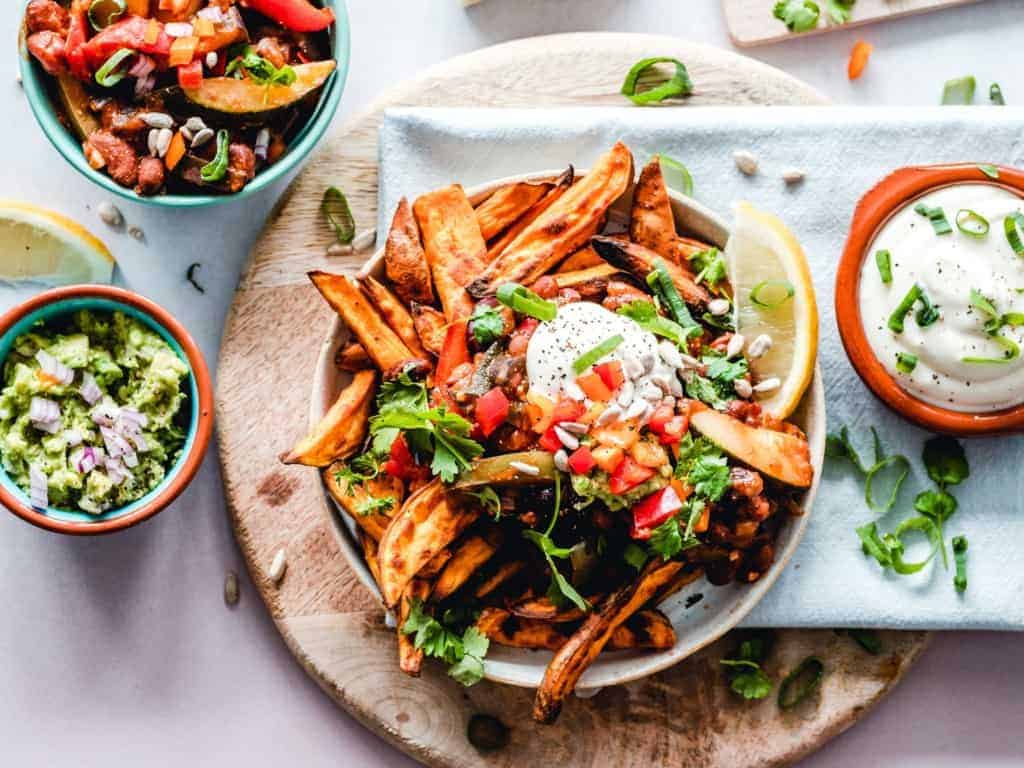5 Tips to Adopt a Plant-Forward Lifestyle

If you have been entertaining the idea of following a plant-based diet to help with your weight management, energy levels, or to manage chronic diseases, but are hesitant because it seems too strict, consider adopting a plant-forward eating approach.
While a plant-based diet is rich in fruits, vegetables, whole grains, beans, nuts, seeds and legumes with minimal or no meat, egg and dairy intake; plant-forward eating allows for the consumption of animal products while prioritizing plant foods. Plant-forward eating has no specific rules; it is closely aligned with the Green Mediterranean diet.
Plant-forward eating supports cardiovascular health by regulating cholesterol levels, introduces antioxidants and phytochemicals into the body, and supports weight management with the inclusion of hydrating, lower calorie ingredients. This eating style is high in fiber which benefits digestion as well as stabilizes blood sugar for sustained energy levels throughout the day.
The following five tips will assist you with your plant-forward lifestyle:
- Include both a cooked and raw vegetable with dinner. To go a step further, add a pickled or fermented vegetable as a condiment to support your gut health.
- Discover new ways to transform a single vegetable. We can all think of five ways to prepare a potato, but can you do the same for zucchini? Challenge yourself to look up and try new recipes for a single ingredient. For example, use thinly-sliced zucchini in place of noodles for a lasagna or halve the meat and double the veggies in your next Kung Pao stir fry. Try baking zucchini halves stuffed with turkey sausage, diced tomatoes and breadcrumbs or toss zucchini noodles with pesto and serve chilled with a skewer of grilled shrimp.
- Look to global cuisine for inspiration. Mediterranean countries and those in Southeast Asia such as India, Thailand and Korea are naturally plant-forward. These cultures do not serve vegetables as a side dish, instead, vegetables are woven into each dish or course. With international travel at a standstill, take a global tour of local ethnic restaurants. When you find something you enjoy, attempt to recreate it at home!
- Use fresh herbs to dress up your protein. Do not banish the garnish to the side of your plate. Instead of a teaspoon of dried basil, slice several tablespoons of fresh basil for a more flavorful chicken caprese. Lemon and parsley go well together on fish. Fresh chopped rosemary pairs well with red meat. Try this chimichurri sauce.
- Experiment with a variety of unprocessed plant proteins. While frozen “veggie chicken nuggets” are available and are fine to eat occasionally, they are also expensive and highly processed. Instead, learn to use beans and lentils in your cooking. Try serving an entrée with quinoa instead of rice. Tofu, once marinated, is an excellent and flavorful source of protein.
Plant-forward eating is an excellent way to support your vitality and wellness goals. It is a flexible eating style which encourages the intake of more plants without restricting your ability to enjoy all of the food groups.
 Amber Phillips, MS, RD is a registered dietitian at Island Hospital. She has a Master’s degree in nutrition from Bastyr University in Kenmore, WA and a Bachelor’s degree in biology from Metropolitan State University, St. Paul, MN. Phillips has a keen interest in community education. “Nutrition advice can be confusing and sometimes conflicting,” says Phillips. “My role as a dietitian is to follow the latest research and make it easy to understand for my patients and the public.” To schedule an appointment with Phillips, call (360) 299-1300 x2567.
Amber Phillips, MS, RD is a registered dietitian at Island Hospital. She has a Master’s degree in nutrition from Bastyr University in Kenmore, WA and a Bachelor’s degree in biology from Metropolitan State University, St. Paul, MN. Phillips has a keen interest in community education. “Nutrition advice can be confusing and sometimes conflicting,” says Phillips. “My role as a dietitian is to follow the latest research and make it easy to understand for my patients and the public.” To schedule an appointment with Phillips, call (360) 299-1300 x2567.
Published on March 4, 2021
